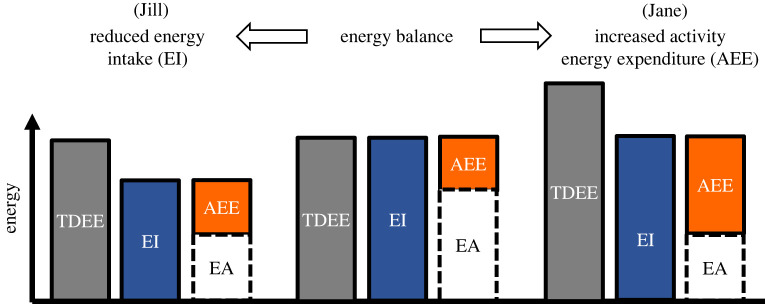Figure 1.
From a state of energy balance, Jill creates an energy deficit by reducing her energy intake (EI), while Jane creates the same energy deficit by increasing her activity energy expenditure (AEE). In both cases, the initial energy deficit (the difference between total daily energy expenditure, TDEE, and EI) results in less (non-endogenous) energy being available for all other physiological functions outside of activity. If a state of energy deficit persists then body weight decreases, in turn resulting in metabolic rate decreasing, and while reduced energy availability (EA) persists, metabolic adaptations (observed as reductions in cellular metabolic rate) may result; together this reduces TDEE, allowing Jill and/or Jane to eventually return to energy balance.

